How to Choose the Best Lithium Battery for Your Electric Bike
June 13, 2025 / Battery Expert Team / Battery Basics
Choosing the right battery for your electric bike isn’t just about bigger numbers. It’s about finding the right fit—for your ride, your terrain, and your lifestyle. Whether you’re commuting downtown, cruising the suburbs, or tackling rugged trails, the battery you choose makes all the difference.
Let’s break it down, so you can pick the best battery for your electric bike without the guesswork.
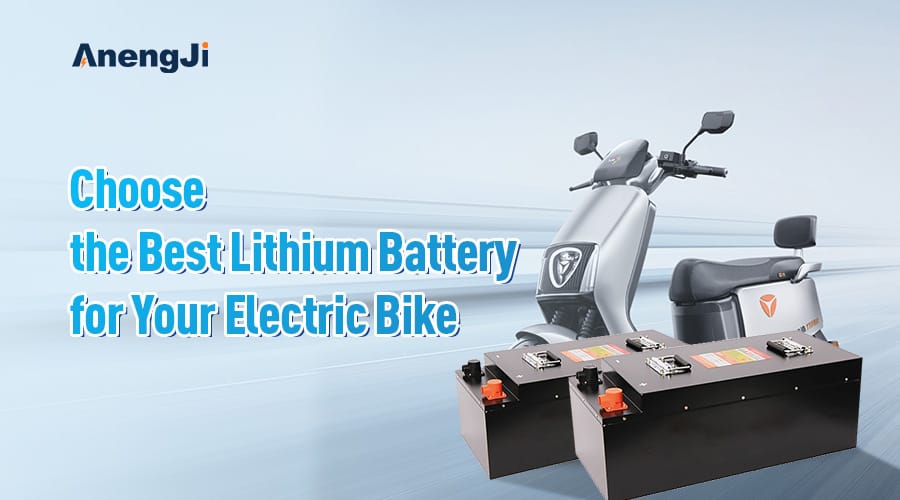
Why Lithium Batteries Are Taking Over
If you’re still riding with a lead-acid battery, it might be time for an upgrade. Lithium batteries have completely changed the game. Here’s why:
More Power When You Need It
Lithium batteries deliver stronger output, which means better acceleration and hill climbing.
Lighter Weight
They weigh about half—or even a third—of traditional lead-acid batteries. For example, a 60V 20Ah lead-acid setup can weigh up to 30kg. A lithium version? Around 11kg. That’s a big difference when you’re on two wheels.
More Energy, Less Bulk
With higher power density (up to 260Wh/kg for NCM and 165Wh/kg for LiFePO4), lithium batteries go farther without adding weight.
Longer Life
Expect 1,500 to 6,000 charge cycles depending on the type. Compare that to just 300–500 for lead-acid. In plain terms: lithium lasts years longer.
Faster Charging
Most lithium batteries support both slow and fast charging. Fast charge in under an hour if needed (1C–3C), or charge overnight to extend battery life.
Low Self-Discharge
When not in use, lithium batteries hold their charge much longer. Great if you don’t ride every day.
Eco-Friendly
No toxic heavy metals like lead or cadmium. It’s a cleaner, safer choice—for you and the planet.
Common Mistakes When Choosing an E-Bike Battery
A bigger battery isn’t always better. Many riders focus only on high voltage (like 60V or 72V) or huge capacity (like 45Ah+), thinking it guarantees longer range or better performance.
Truth is, the best lithium battery for your electric bike depends on your motor, riding habits, and terrain. Overbuilding can hurt your ride—and your wallet.
Match Battery to Your Ride Style
Different riders need different setups. Here’s a quick guide based on how and where you ride:
🏙️ City Commuting
Short trips, flat roads, frequent stops.
Go for a lightweight 48V 20Ah lithium battery. Easy to carry, affordable, and gets the job done.
🌄 Suburban Cruising
Longer rides, hills, mixed terrain.
Step up to 60V or 72V batteries, 30Ah or more, for better range and climbing power.
🏁 High-Performance Riding
Fast speeds, aggressive acceleration, or trail use.
Pair a high-watt motor with a high-voltage, high-capacity battery for max output. Think 72V 35Ah or higher.
How to Choose the Right Battery Specs
When you’re shopping for the best battery for electric bike, here are the key specs to keep in mind:
🔋 Voltage (V)
Voltage powers the motor. More voltage = more speed and torque.
📦 Capacity (Ah)
Measured in amp-hours (Ah). This tells you how far you’ll go on a single charge.
🔄 Battery Type
Make Sure It Fits—Literally
Before you buy, double-check your e-bike’s battery compartment size. A mismatch could mean your battery doesn’t fit—or adds too much weight. If you need help, companies like Anengji offer custom solutions and tech support.
What Else Matters?
Charge time: Faster isn’t always better. Fast charging is convenient, but slow charging helps batteries last longer.
Cycle life: LiFePO4 batteries can last over 6,000 cycles. That’s years of reliable use.
Cold-weather performance: All lithium batteries lose efficiency in low temps—but LiFePO4 holds up better than most.
Final Tip: Choose Smart, Not Just Big
Choosing a lithium battery for your electric bike should be based on how you actually ride—not just specs on paper. A well-matched battery gives you solid range, good power, and safe performance. And if you ride often, paying more upfront for a quality battery will save you money in the long run.
Need help picking the right battery?
Anengji offers a full range of lithium batteries for e-bikes—from affordable city models to long-range off-road options. Reach out for custom advice or bulk orders.
Electric Bike Lithium Battery Buying Guide-FAQs
Why are lithium batteries better than lead-acid for e-bikes?
It’s simple: lithium batteries are lighter, last longer, and work better. That’s why most international markets—especially in the U.S. and Europe—have moved away from lead-acid.
-
Lighter and more efficient: A typical 48V 20Ah lithium battery weighs around 11 kg. Lead-acid? Almost triple that. You get 2–3 times the range with the same weight.
-
Longer life, lower cost over time: A good lithium e-bike battery lasts 8–10 years. Lead-acid might give you 1–2 years. So even though lithium costs more up front, the cost per year is actually about 40% lower.
-
Environmentally safer: No lead or cadmium, and fully compliant with global recycling laws.
-
International certification ready: Lithium batteries can meet CE (Europe), UL 2271 (U.S.), and UN38.3 transport safety standards. That means smooth customs clearance and fewer regulatory headaches.
Pro tip: For cross-border shipping, always choose a battery with UN38.3 certification.
What voltage should I choose for my electric bike battery?
The right voltage depends on where and how you ride. Here’s a breakdown based on international usage:
48V System
-
Best for: City commuting in Europe (like the Netherlands or Denmark), and short-distance deliveries in Southeast Asia.
-
Why it works: Lightweight setups, usually under 50kg load.
-
Regulations: EU law caps e-bike voltage at 48V under EN 15194. A BMS (Battery Management System) is required for safety compliance.
60V / 72V Systems
-
Best for: U.S. suburban commutes (Texas, California), off-road rides, or delivery vehicles in hotter climates like the Middle East.
-
High-power needs: For riders carrying 100kg+ or using motors over 1500W, these voltages are ideal.
-
Real-world case: E-Motion, a rental company in Dubai, uses a 72V 32Ah high-rate NCM lithium battery paired with a 2000W motor. It’s built to handle 113°F (45°C) desert heat—thanks to active cooling and a high-temp rated LiFePO4 battery.
How do I know if a lithium battery brand is internationally reliable?
Here’s what to look for when choosing a battery supplier for global use:
-
Certifications matter: CE (EU), FCC or E-Mark (U.S./EU), UN38.3 (transport), and JIS C8714 (Japan) ensure your battery can legally and safely travel across borders.
-
Proven battery cells: Stick to top-tier brands like LG, Panasonic, or CATL. They’re consistent and safe.
-
Smart BMS features: Look for multi-language support (English, Spanish, French), built-in GPS, and intelligent battery health monitoring.

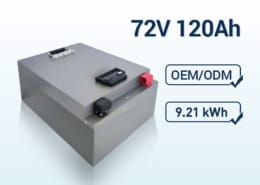
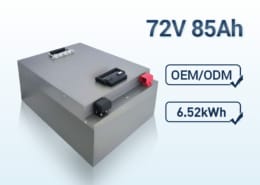
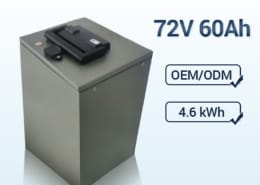
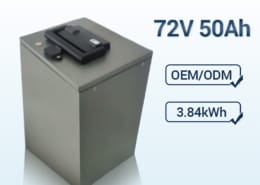



Leave a Reply
Want to join the discussion?Feel free to contribute!